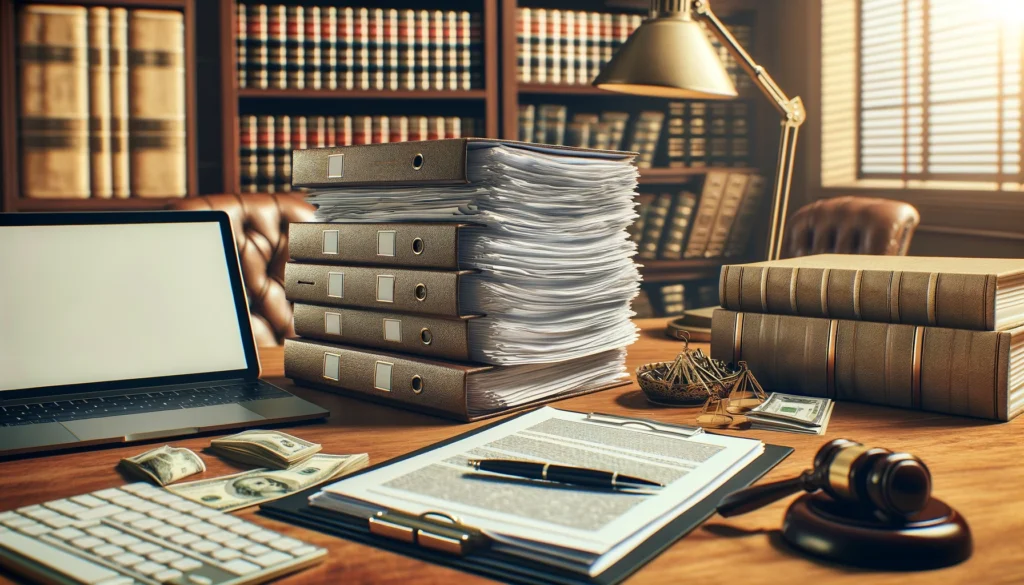
Navigating the Digital Lawscape: Introduction to ChatGPT and LLMs
The advent of artificial intelligence (AI) has significantly transformed various sectors, including the legal arena. For paralegals, leveraging AI tools such as ChatGPT and large language models (LLMs) can provide a substantial competitive edge, particularly in managing personal injury claims. By integrating AI, paralegals can streamline processes, reduce time spent on mundane tasks, and enhance the precision of their work. This article will guide you through effectively employing ChatGPT in your paralegal duties, focusing on optimizing the resolution of personal injury claims.
Getting Started: Essential Preparations for Using ChatGPT
Before diving into ChatGPT’s capabilities, proper setup is crucial. Ensure you have access to the platform and any necessary subscriptions. Customized training is often required to tune the LLM for legal vernacular. Begin by familiarizing the model with key legal terms and industry-specific jargon through targeted prompts and documents. Initial prompts might include definitions of legal terms or summaries of personal injury cases to offer contextual grounding for future interactions.
Consider these preparatory steps:
- Secure access to ChatGPT and relevant subscriptions.
- Introduce legal language through customized prompts.
- Establish baseline prompts to guide the AI’s learning trajectory.
This preparation sets the stage for more complex prompting and better AI performance.
Also read:
Mastering the Basics: Foundational Prompts for Gathering Information
To start, crafting foundational prompts is essential for collecting vital case information. These prompts should be designed to elicit comprehensive responses without overwhelming the AI. For example, an effective prompt could be: “Provide a summary of the key facts in this personal injury case involving a car accident on [Date].”
Verifying factual accuracy is another critical task. Cross-reference ChatGPT’s outputs with reliable sources and validated data to ensure its responses are credible. Furthermore, ChatGPT can significantly streamline client interviews. Use structured prompts like “List the injuries sustained by the claimant according to the medical report dated [Date]” to obtain accurate client details expeditiously.
Effective prompts for gathering information might include:
- “Summarize the accident report dated [Date] involving [Parties].”
- “Identify the primary witnesses and their statements in the case file.”
- “What injuries and treatments are documented in the claimant’s medical records?”
These foundational techniques will make subsequent stages more manageable.
Also read:
The Art of Precision: Nuanced Prompts for Legal Documentation
When it comes to precise legal documentation, the art of crafting nuanced prompts becomes invaluable. Accurate case summaries, demand letters, and settlement agreements require meticulous attention. Prompts like “Draft a demand letter for a personal injury claim involving a fractured bone and lost wages due to the accident on [Date]” can yield initial drafts that save considerable time.
Ensuring compliance with legal standards and formatting guidelines is non-negotiable. Custom prompts should guide ChatGPT to adhere to these standards, such as: “Format the settlement agreement according to [State] law, including necessary clauses for liability release and indemnification.”
For precise documentation, consider:
- “Create a case summary that outlines the liabilities and injuries for review by the senior attorney.”
- “Generate a legally compliant demand letter detailing the claimant’s sustained injuries and associated costs.”
- “Draft a settlement agreement that incorporates standard legal terms and conditions as per [State] regulations.”
Such requests demand a blend of precision and legal acumen, enhancing document accuracy and efficiency.
Also read:
Streamlining Case Analysis: Advanced Prompting Techniques
Diving deeper into ChatGPT’s potential, advanced prompting can streamline complex case analyses. For instance, analyzing medical records and accident reports can be expedited using detailed prompts like: “Analyze the medical records to identify any inconsistencies or additional injuries not previously noted.”
Identifying crucial issues and liabilities is another area where advanced prompting is beneficial. Prompts such as “Compare case law on similar personal injury claims involving rear-end collisions to identify potential precedents” can illuminate nuances that may influence case strategy.
To maximize efficiency in case analysis:
- “Review the accident report to identify potential negligence or liability issues.”
- “Summarize key points from medical expert testimonies and highlight areas of contention.”
- “Generate a comparative analysis of past case law with outcomes relevant to the current claim.”
These techniques ensure comprehensive case preparation, bolstering your ability to present well-informed legal arguments.
Also read:
Communicating with Clients: Enhancing Client Interaction and Support
Effective client communication remains an essential aspect of legal practice. Utilizing ChatGPT to develop empathetic and clear prompts can significantly improve client interaction. For example, an empathetic prompt might read: “Explain the potential outcomes of this personal injury claim in a client-friendly manner.”
Maintaining clarity and accessibility in explanations helps demystify legal jargon for clients. Answering client queries promptly and accurately using well-crafted prompts like “Respond to the client’s query about filing deadlines for their injury claim” can enhance client satisfaction and trust.
Consider prompts that enhance client support:
- “Explain the legal process of a personal injury claim in simple terms.”
- “Provide an update on the claim’s progress, ensuring clarity and reassurance.”
- “Answer common client questions regarding settlement negotiations and timelines.”
Such prompts ensure clients are well-informed, fostering a positive attorney-client relationship.
Also read:
Staying Ethical: Ensuring Confidentiality and Compliance
Ethics form the backbone of any legal practice. Thus, maintaining confidentiality and compliance when using AI is paramount. Ensure adherence to ethical guidelines by creating prompts with clear confidentiality instructions: “Delete this data after completing the task to maintain client confidentiality.”
Protecting sensitive information should be a priority. Consistently audit ChatGPT’s interactions and responses for compliance with legal tech regulations, employing prompts like: “Confirm that the information shared in the analysis complies with [Relevant Data Protection Law].”
Essential prompts for ethical AI use include:
- “Ensure all client data remains confidential and secure during use.”
- “Verify compliance with [State] data protection and privacy laws.”
- “Provide guidance on handling sensitive information in client communications.”
By doing so, you mitigate risks and uphold ethical standards in your practice.
Also read:
Future-Proofing Your Practice: Continuous Learning and Adaptation
The landscape of AI is continually evolving. To remain competitive, ongoing education and adaptation are crucial. Engage with resources that focus on the latest advancements in AI and legal tech. Encourage a forward-thinking mindset within your team to foster innovation and growth.
Ensure continuous improvement by:
- Attending webinars and training sessions on AI tools.
- Subscribing to industry journals and publications on legal technology.
- Participating in forums and professional networks dedicated to AI in the legal field.
This proactive approach ensures your practice remains at the cutting edge of legal innovation.
Also read:
Wrapping Up: Conclusion and Key Takeaways
Integrating AI, particularly ChatGPT, into personal injury claims management offers undeniable benefits. This article has explored various techniques, from foundational prompting to advanced analysis, accurate documentation, and ethical considerations. Embracing these methods can significantly enhance efficiency and precision in paralegal tasks.
Continuously experiment with and refine your use of AI tools to discover new efficiencies. The diligent application of AI can transform your workflow and set a new standard in legal practices. By keeping pace with technological advancements, you position yourself and your firm for sustained success in an increasingly digital legal landscape.


